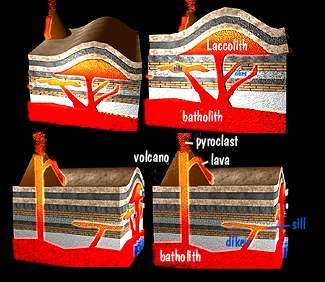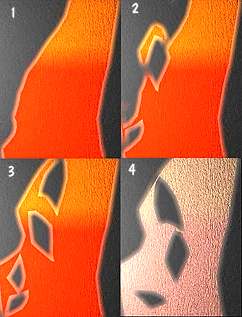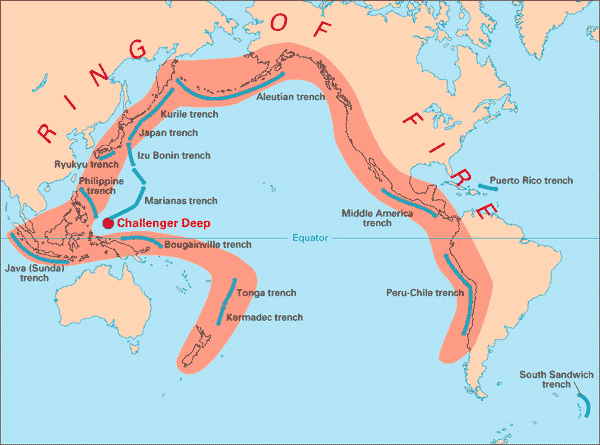

Plutons are named for their shape and how they interact with the surrounding rock. Dikes a fingers of intrusive rock that crosses layering rocks. (Dikes are "diagonal") The opposite of a dike is a sill, and sills intrude along the layering rocks. They run parallel to the strata. (Sills are opposite dikes. (Sill think of window sill.)
Laccoliths are intrusive bodies that grow to sufficient size to push up layering rocks. It pushes the layers above upward and changes the shape of the strata. Laccoliths are dome forming.
A volcanic pipe is like a dike, only it opens to the surface and is the magma conduit for a volcano. Magma eventually solidifies in the pipe and forms in intrusive rock just like the other plutons.
The largest body of underground magma is known as a batholith. Batholiths are great reservoirs of magma and cool at very slow rates. Portions of them often form pegmatites due to their slow cooling. One additional type is called a stock ... a mini-batholtih.
When an intrusive body moves through the "country rock", it may dislodge pieces of the country rock that do not have the consistency or time to remelt. These pieces being cooler will often fall toward the bottom of the intrusion. They are called xenoliths when they have solidified in place.

If we look at the location of andesitic volcanoes they share some common features. They are located around the edge of the pacific ocean. They line up almost exactly with the edges of tectonic plates, they are near all subduction zones.
If we examine basaltic volcanoes we quickly see that they are located at the mid-oceanic ridges, on continents, and on a few semi-isolated islands in the pacific. They appear to form without regard for the type of land on which they intrude. (all types of crust)
Rhyolitic volcanoes tend to be observed over continental crust almost explosively, so their chemistry must be strongly related to the chemistry in a continent.
To get a better picture of volcanism we need to look at two things ...
1.) what is the magma composition necessary to form a given magma type? (What are the necessary starting materials?)
2.) And what happens when a magma solidifies?
| NEXT | TOC | PREV |